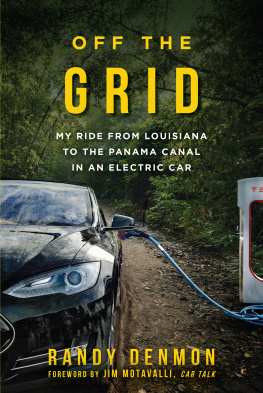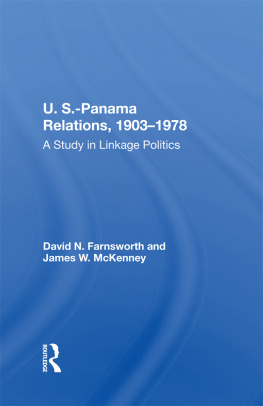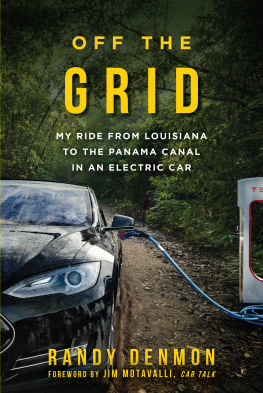Copyright 2017 by Randy Denmon
Foreword 2017 by Jim Motavalli
All rights reserved. No part of this book may be reproduced in any manner without the express written consent of the publisher, except in the case of brief excerpts in critical reviews or articles. All inquiries should be addressed to Skyhorse Publishing, 307 West 36th Street, 11th Floor, New York, NY 10018.
Skyhorse Publishing books may be purchased in bulk at special discounts for sales promotion, corporate gifts, fund-raising, or educational purposes. Special editions can also be created to specifications. For details, contact the Special Sales Department, Skyhorse Publishing, 307 West 36th Street, 11th Floor, New York, NY 10018 or .
Skyhorse and Skyhorse Publishing are registered trademarks of Skyhorse Publishing, Inc., a Delaware corporation.
Visit our website at www.skyhorsepublishing.com.
10 9 8 7 6 5 4 3 2 1
Library of Congress Cataloging-in-Publication Data is available on file.
Cover design by Rain Saukas
Cover photo credit: iStock
Print ISBN: 978-1-5107-1739-8
Ebook ISBN: 978-1-5107-1740-4
Printed in the United States of America
Men wanted for hazardous journey to the South Pole. Small wages, bitter cold, long months of complete darkness, constant danger. Safe return doubtful. Honor and recognition in case of success.
Ad placed in a London paper by Ernest Shackleton for his 1902 Discovery Expedition. He said later: So overwhelming was the response to his appeal that it seemed as though all the men of Great Britain were determined to accompany him.
Contents
Foreword
A sked why they bought an SUV when a sedan or minivan made more sense, many Americans cite the concept of personal freedom, meaning thatif they wanted tothey could take it off road, into the trackless wilderness and fordable streams featured in the commercials. Of course, only 15 percent of owners actually take their SUVs off the school/work/mall/house-of-worship axis, but its important to these buyers to know they could.
Four-wheel-drive boxes are dominating the market, while battery electrics are in the doldrumsonly .37 percent of the American market in 2016. Why? Price and range anxiety mostly, though thats changing as affordable 200-mile cars like the Chevy Bolt hit the market.
The Tesla Model S, the car owned by Off the Grid author Randy Denmon, can travel up to 265 miles on a charge. And that means owners rarely suffer range anxiety, and they canand dotake their cars across country, or at least on long vacations. You meet Teslas in the craziest places these days.
There are 790 Tesla Supercharger stations in the United States, and what a comfort that is for travel in the Lower 48. But somebody had to be the trailblazer to take their Tesla further afield, and that turns out to be Randy Denmon, with his complaining sidekick Dean Lewis.
In the grand tradition of Don Quixote and Sancho Panza, or more recently Bill Bryson and Stephen Katz taking a walk in the woods, they leave the Superchargers behind at the Mexican border and head due southwith the Panama Canal as their destination. And bicker with each other the whole way.
Like Fear and Loathing in Las Vegas without the drugs, but with the paranoiathis is a road book and a rollicking adventure story. Its called Off the Grid , but actually its about the grid, or at least the patched-together, intermittently available version of it that exists south of the border.
Will our intrepid heroes connect to 230 volts before their battery indicator reads zero and theyre stranded in the middle of nowhere, waiting for the drug cartels to swoop down? Will the Tesla survive potholed roads, torrential storms and crooked customs officials with their hands out for bribes?
Youll have to read the book to find out, but theres no doubt that even attempting a crazy trip like this is a sign that electric cars arefinallyentering the mainstream. And you bet thats a good thing.
Jim Motavalli
Fairfield, CT
January 2017
Were Off
U nder a sapphire sky, the guard post on the south abutment of the three-mile long Anzalduas International Bridge came into view. Below, in a deep gorge, the Rio Grande trickled by, an unassuming brown slice of water. The far bank seemed no different from McAllen, Texas, a multitude of concrete and buildings wedged between throngs of people.
But on the other side, everything was different. The land was foreign and exotic, the people mysterious. Over there, nothing back here mattered. The little river divided two peoples, one born into a fortunate land, the others.
The federal agents of the United Mexican States stood in their imposing uniforms, machine guns held at port arms. The cool January morning was clear, temperature in the forties, and a half-moon was setting to the west.
Where were we going? Butterflies filled my stomach. My hands twitched.
I have heard all journeys have a purpose, even directionless ones. This journey had a direction, if little else. Maybe it was a spiritual trip as much as a physical journey.
The queue of cars inched forward. I turned to Dean Lewis as I eased the wonderful piece of modern technology that would get us across the border, just a few feet in front of us. The four-door sedan looked rather plain, like something any typical American salesman or soccer mom would employ to efficiently move through suburbia. But this high-tech machine, the new Tesla Model S, was powered only by electricity.
Two Louisiana rednecks were fixing to drive this car through Latin America to Panama, and maybe beyond. Perhaps not my brightest idea, but then, I have been known to pursue some insane endeavors.
The EPA estimates the range of this Tesla at 265 miles per charge. Of course, thats running at a constant 65 mph, with no air conditioning, with only 300 pounds of cargo, over flat ground, without headwind, and without other deviceswipers, lights, radio, etc. Who knew what the real-world range of the car would be over bumpy, third-world roads, crossing varied terrain loaded down with 600 or 700 pounds of cargo? Theoretically, the car could travel over 400 miles at a constant speed of 35 mph. But then, everything works in theory, or over a smooth test track somewhere in California.
I looked to the dash and the cars speed-range curve. Bigger problems lay ahead other than the cars range, most notably, how would we charge the vehicles lithium-ion battery pack every day? It takes twelve hours to charge the Tesla with standard 240-volt, 30-amp power, and two and a half days with 120-volt electricity, equivalent to a two-prong plug for a typical American living-room lamp.
I had conjured up the idea of this trip a year before, really only hoping I might get a chance to give it a go in the near future. Maybe the trip would produce a book? Wed see how it all turned out.
I had, over the last year, learned how to get a Tesla charged in rural Louisiana. Two factors were critical: 1) have plenty of charging cordsthe power source might be a significant distance from the pavement, and 2) have plenty of charging options. In the United States, there are more than twenty-five available sockets that supply 240-volt power.
Before the trip, I fabricated two very long 240-volt extension cords with a combined length of three hundred feet. These are big, thick rolls of three-quarter-inch wire that weigh about thirty pounds each. I had also purchased all the plugs and adapters I could get my hands on.













